Abstract
Although oral glucocorticoids are the treatment of choice for moderate to severe ulcerative pancolitis, their systemic side effects and adrenal suppression account for considerable morbidity. An oral glucocorticoid-conjugate (prodrug), budesonide-beta-D-glucuronide, which is not absorbed in the small intestine but is hydrolysed by colonic bacterial and mucosal beta-glucuronidase to release free budesonide into the colon was synthesised. The objective of this study was to compare treatment with budesonide-beta-D-glucuronide with treatment with free budesonide by examining: (1) the healing of experimental colitis and (2) the extent of adrenal suppression. Pancolitis was induced with 4% acetic acid. Animals were then randomised to receive oral therapy for 72 hours with (1) budesonide-beta-D-glucuronide, (2) free budesonide, or (3) vehicle. Drug efficacy and colitic healing was determined by measuring gross colonic ulceration, myeloperoxidase activity, and in vivo colonic fluid absorption. Adrenal suppression was determined by measuring plasma adrenocorticotrophic hormone and serum corticosterone. Vehicle-treated colitis animals had gross ulceration, increased myeloperoxidase activity, and net colonic fluid secretion. Treatment with oral budesonide-beta-D-glucuronide accelerated all measures of colitis healing at a fourfold lower dose than did free budesonide. Furthermore, treatment with budesonide-beta-D-glucuronide did not result in adrenal suppression whereas free budesonide treatment did. A newly synthesised orally administered glucocorticoid-conjugate accelerates colitis healing with limited adrenal suppression. Development of an orally administered colon-specific steroid delivery system represents a novel approach to inflammatory bowel disease treatment.
Full text
PDF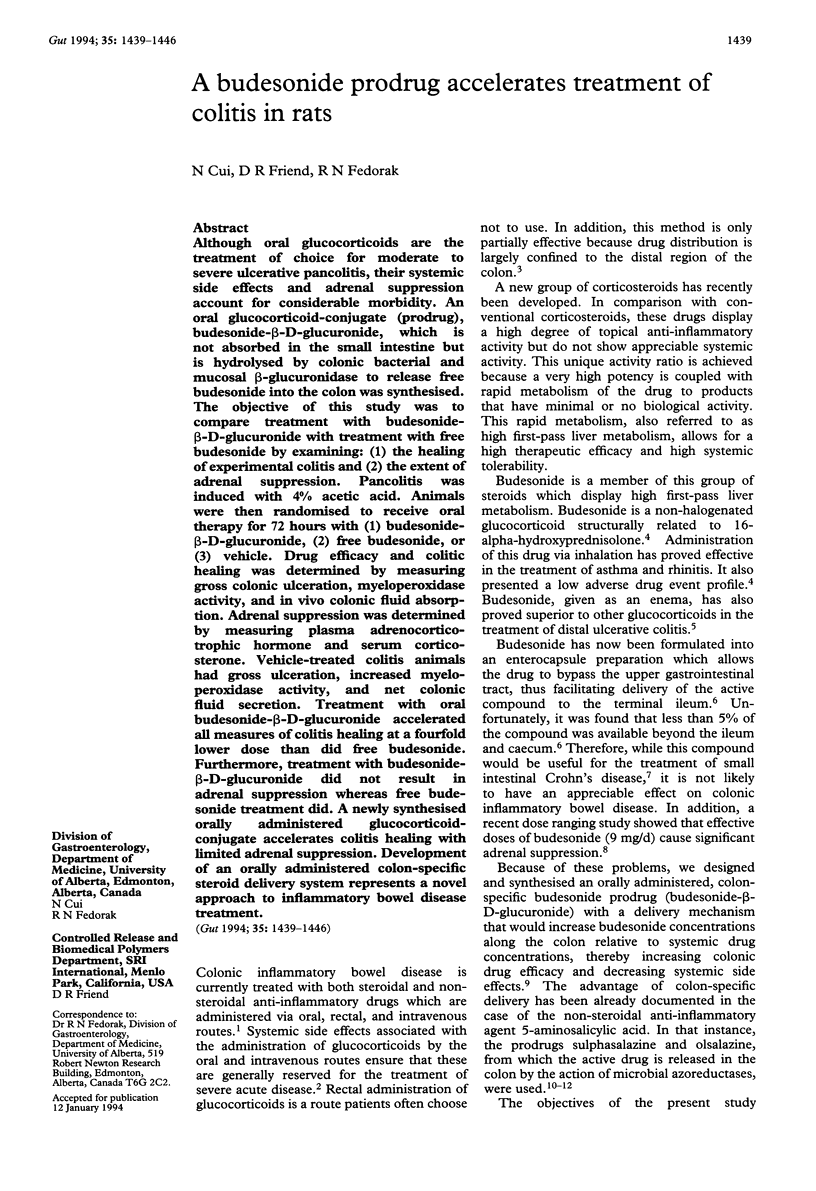
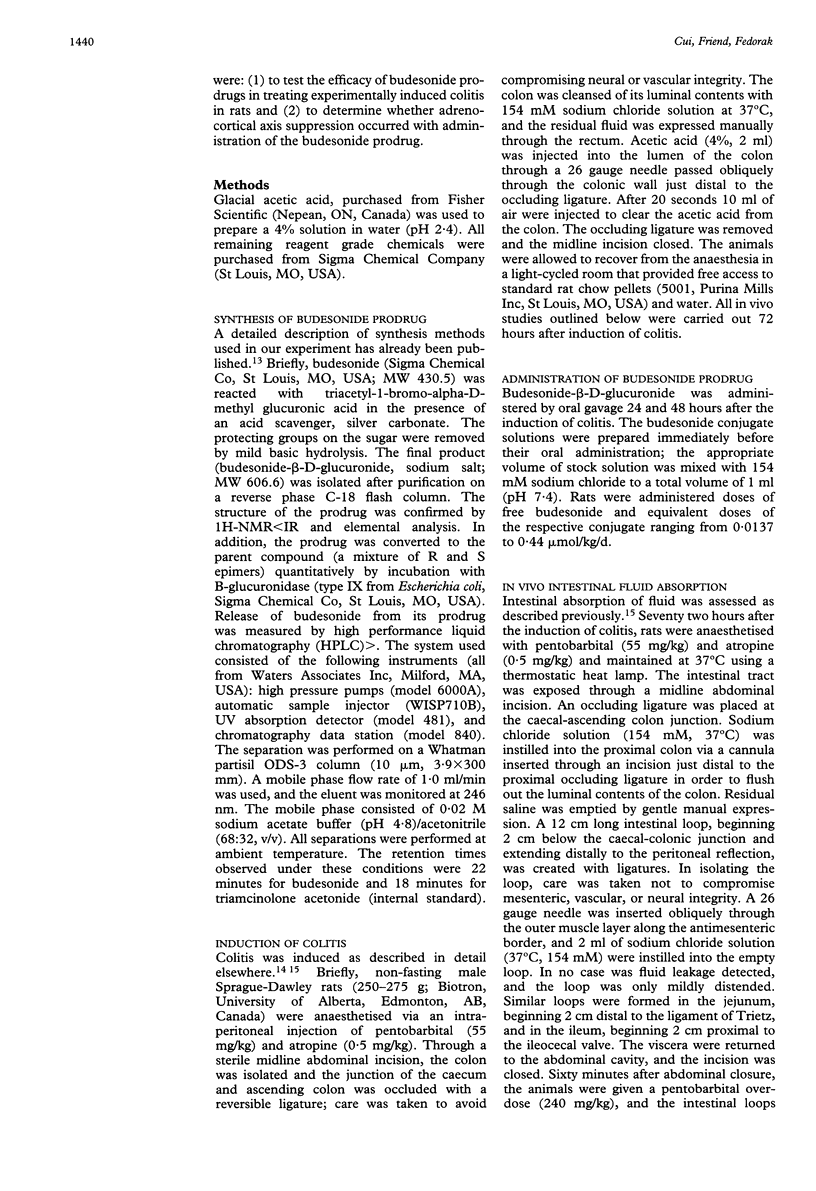
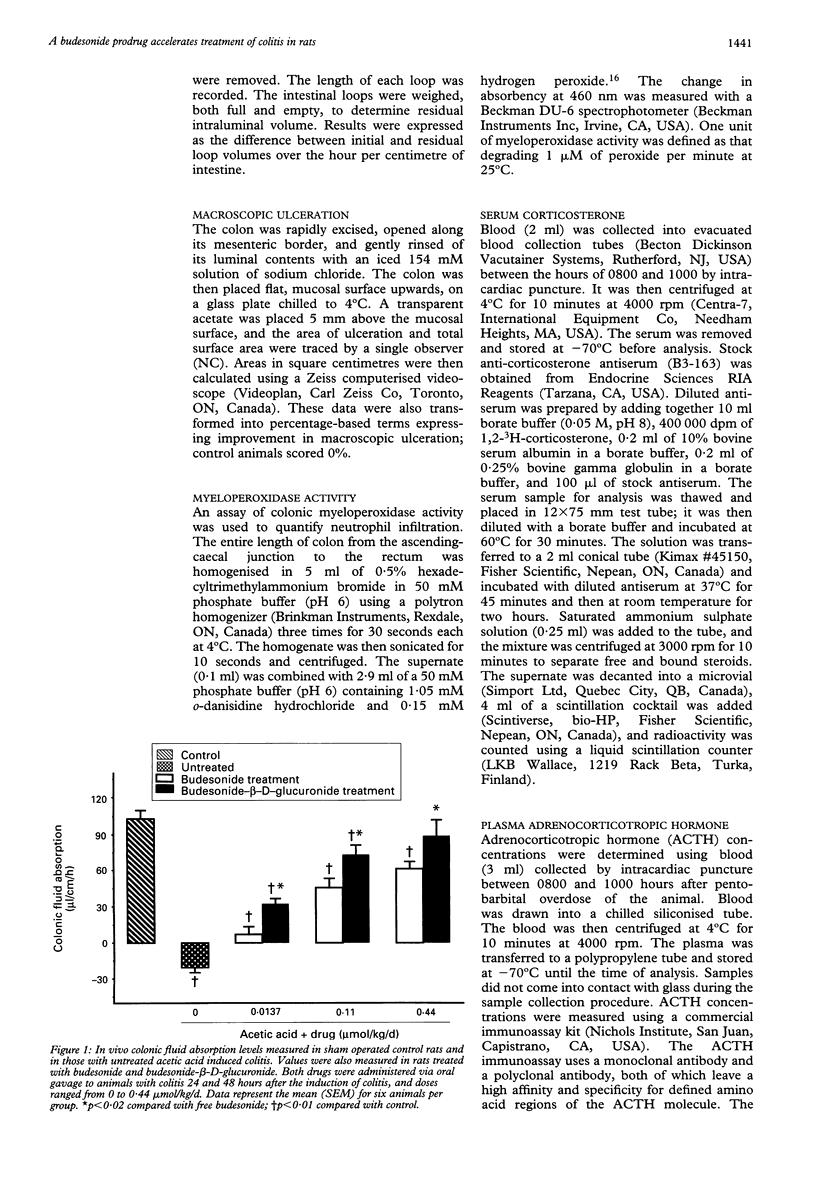
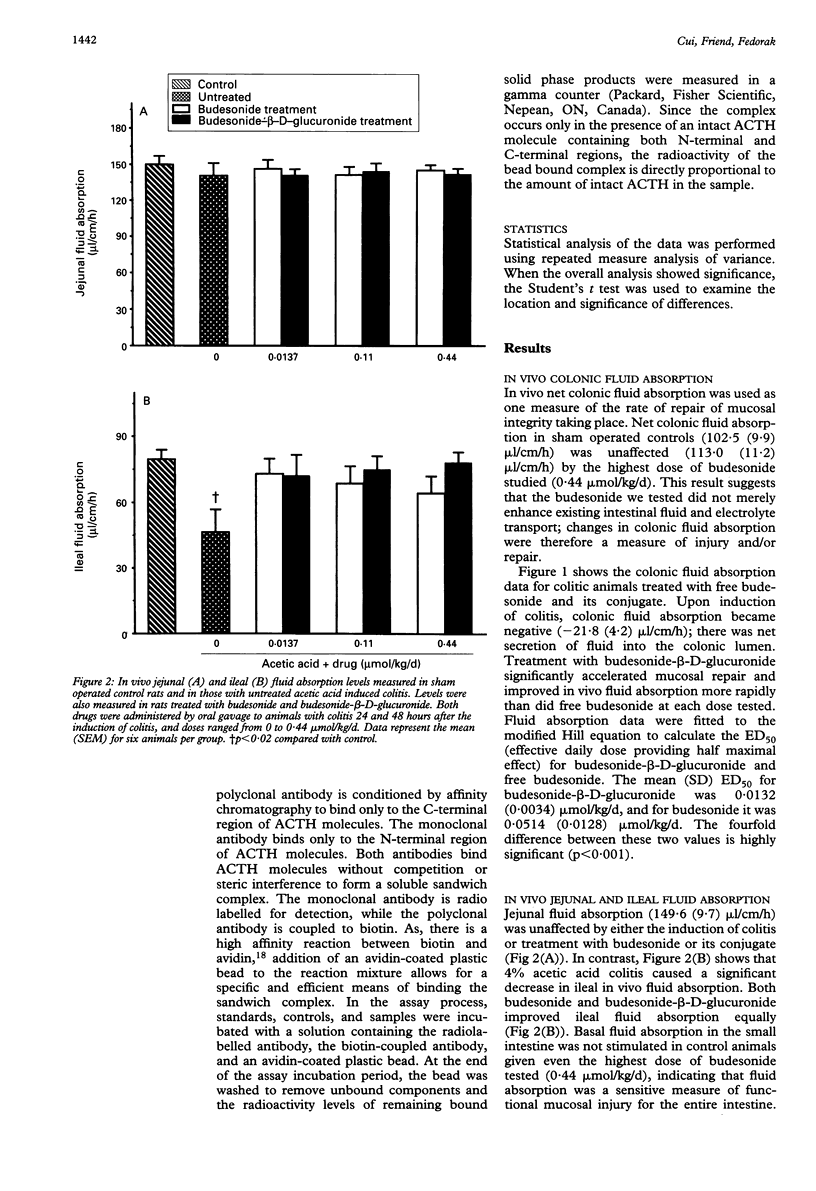

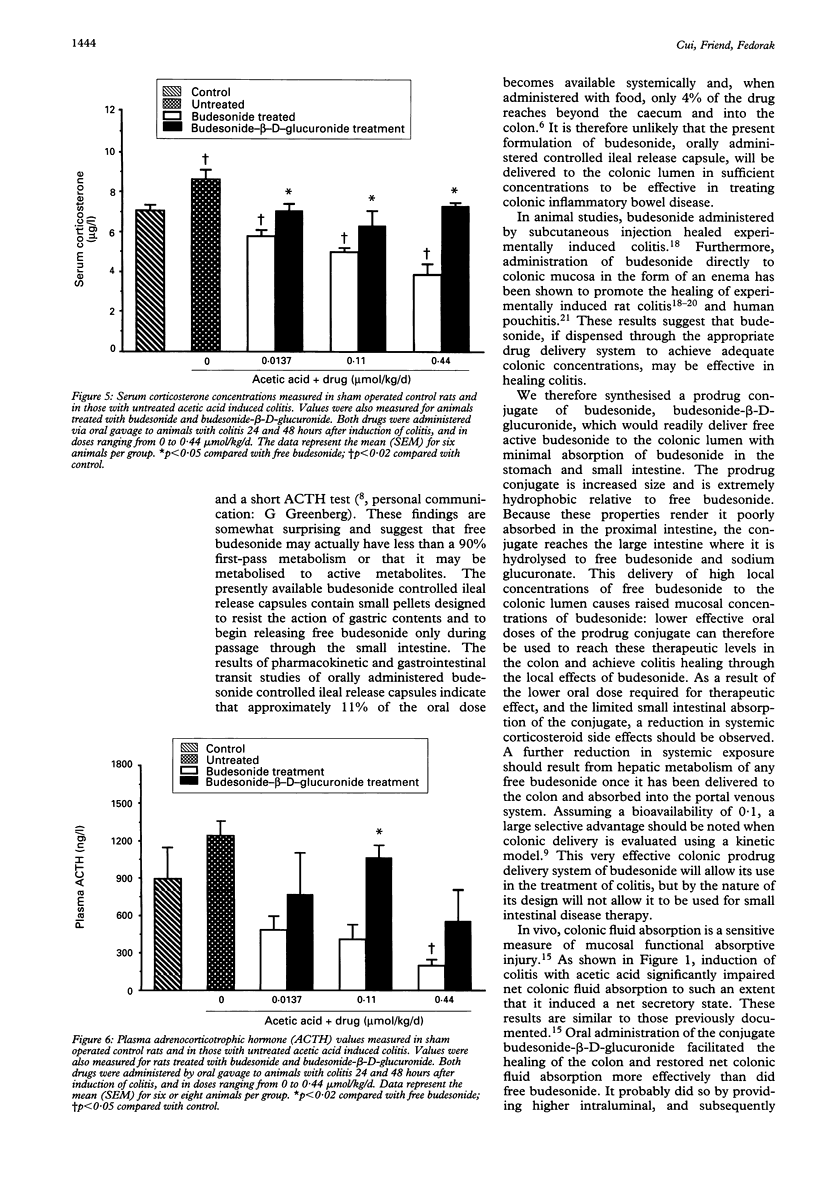
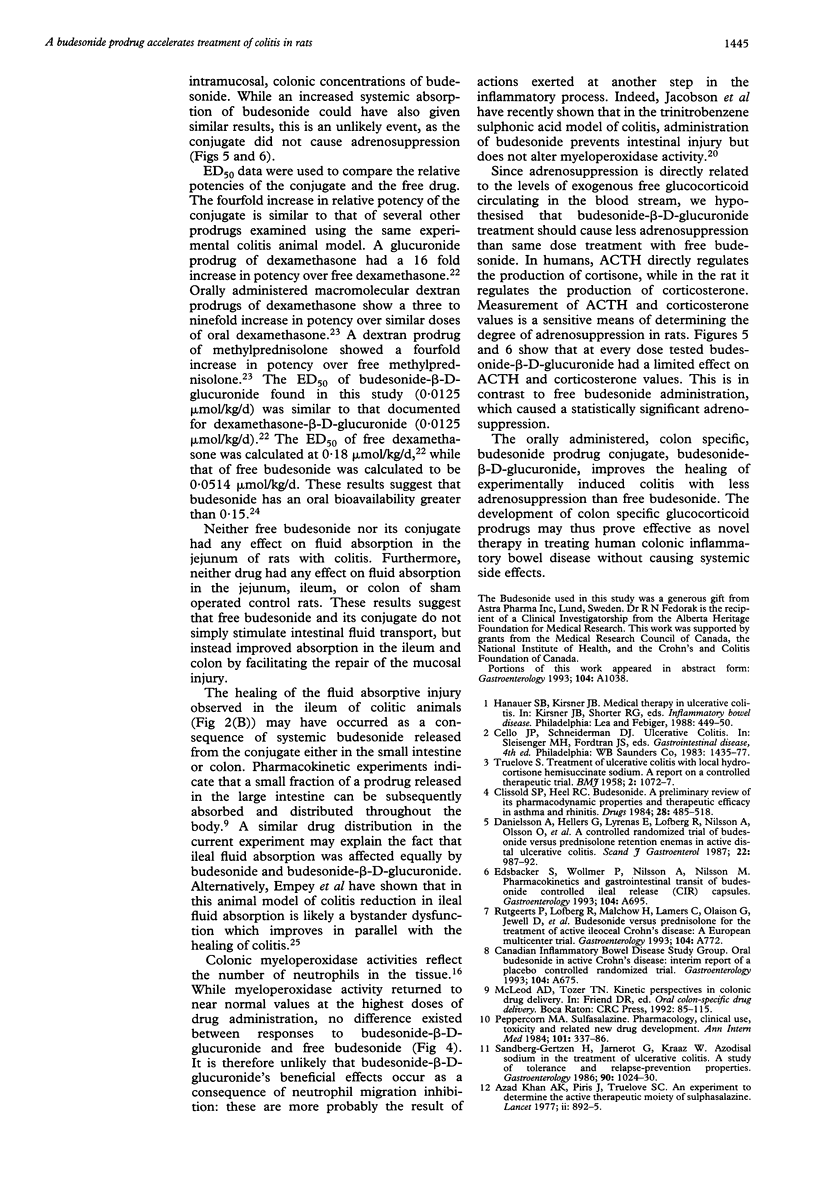
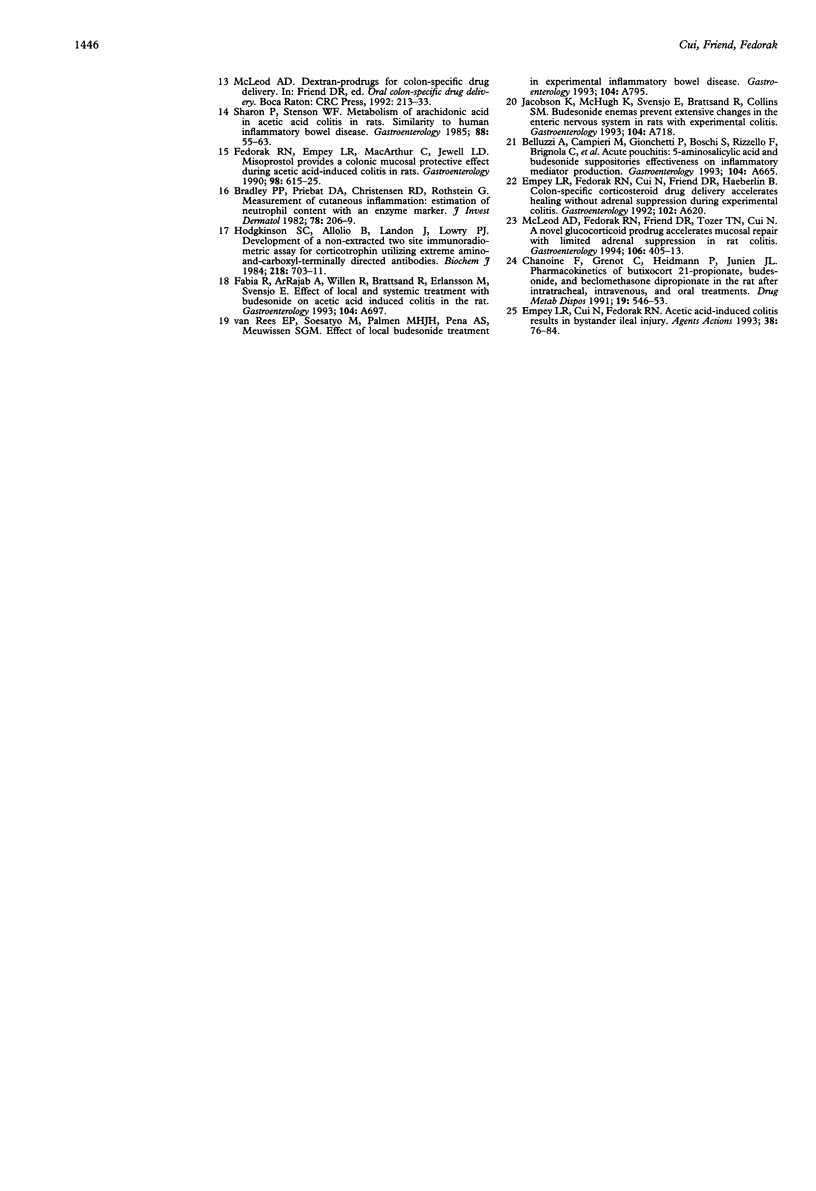
Selected References
These references are in PubMed. This may not be the complete list of references from this article.
- Azad Khan A. K., Piris J., Truelove S. C. An experiment to determine the active therapeutic moiety of sulphasalazine. Lancet. 1977 Oct 29;2(8044):892–895. doi: 10.1016/s0140-6736(77)90831-5. [DOI] [PubMed] [Google Scholar]
- Bradley P. P., Priebat D. A., Christensen R. D., Rothstein G. Measurement of cutaneous inflammation: estimation of neutrophil content with an enzyme marker. J Invest Dermatol. 1982 Mar;78(3):206–209. doi: 10.1111/1523-1747.ep12506462. [DOI] [PubMed] [Google Scholar]
- Chanoine F., Grenot C., Heidmann P., Junien J. L. Pharmacokinetics of butixocort 21-propionate, budesonide, and beclomethasone dipropionate in the rat after intratracheal, intravenous, and oral treatments. Drug Metab Dispos. 1991 Mar-Apr;19(2):546–553. [PubMed] [Google Scholar]
- Clissold S. P., Heel R. C. Budesonide. A preliminary review of its pharmacodynamic properties and therapeutic efficacy in asthma and rhinitis. Drugs. 1984 Dec;28(6):485–518. doi: 10.2165/00003495-198428060-00001. [DOI] [PubMed] [Google Scholar]
- Danielsson A., Hellers G., Lyrenäs E., Löfberg R., Nilsson A., Olsson O., Olsson S. A., Persson T., Salde L., Naesdal J. A controlled randomized trial of budesonide versus prednisolone retention enemas in active distal ulcerative colitis. Scand J Gastroenterol. 1987 Oct;22(8):987–992. doi: 10.3109/00365528708991947. [DOI] [PubMed] [Google Scholar]
- Empey L. R., Cui N., Fedorak R. N. Acetic acid-induced colitis results in bystander ileal injury. Agents Actions. 1993 Jan;38(1-2):76–84. doi: 10.1007/BF02027217. [DOI] [PubMed] [Google Scholar]
- Fedorak R. N., Empey L. R., MacArthur C., Jewell L. D. Misoprostol provides a colonic mucosal protective effect during acetic acid-induced colitis in rats. Gastroenterology. 1990 Mar;98(3):615–625. doi: 10.1016/0016-5085(90)90280-e. [DOI] [PubMed] [Google Scholar]
- Hodgkinson S. C., Allolio B., Landon J., Lowry P. J. Development of a non-extracted 'two-site' immunoradiometric assay for corticotropin utilizing extreme amino- and carboxy-terminally directed antibodies. Biochem J. 1984 Mar 15;218(3):703–711. doi: 10.1042/bj2180703. [DOI] [PMC free article] [PubMed] [Google Scholar]
- McLeod A. D., Fedorak R. N., Friend D. R., Tozer T. N., Cui N. A glucocorticoid prodrug facilitates normal mucosal function in rat colitis without adrenal suppression. Gastroenterology. 1994 Feb;106(2):405–413. doi: 10.1016/0016-5085(94)90599-1. [DOI] [PubMed] [Google Scholar]
- Sandberg-Gertzén H., Järnerot G., Kraaz W. Azodisal sodium in the treatment of ulcerative colitis. A study of tolerance and relapse-prevention properties. Gastroenterology. 1986 Apr;90(4):1024–1030. doi: 10.1016/0016-5085(86)90882-6. [DOI] [PubMed] [Google Scholar]
- Sharon P., Stenson W. F. Metabolism of arachidonic acid in acetic acid colitis in rats. Similarity to human inflammatory bowel disease. Gastroenterology. 1985 Jan;88(1 Pt 1):55–63. doi: 10.1016/s0016-5085(85)80132-3. [DOI] [PubMed] [Google Scholar]
- TRUELOVE S. C., HAMBLING M. H. Treatment of ulcerative colitis with local hydrocortisone hemisuccinate sodium; a report on a controlled therapeutic trial. Br Med J. 1958 Nov 1;2(5104):1072–1077. doi: 10.1136/bmj.2.5104.1072. [DOI] [PMC free article] [PubMed] [Google Scholar]


